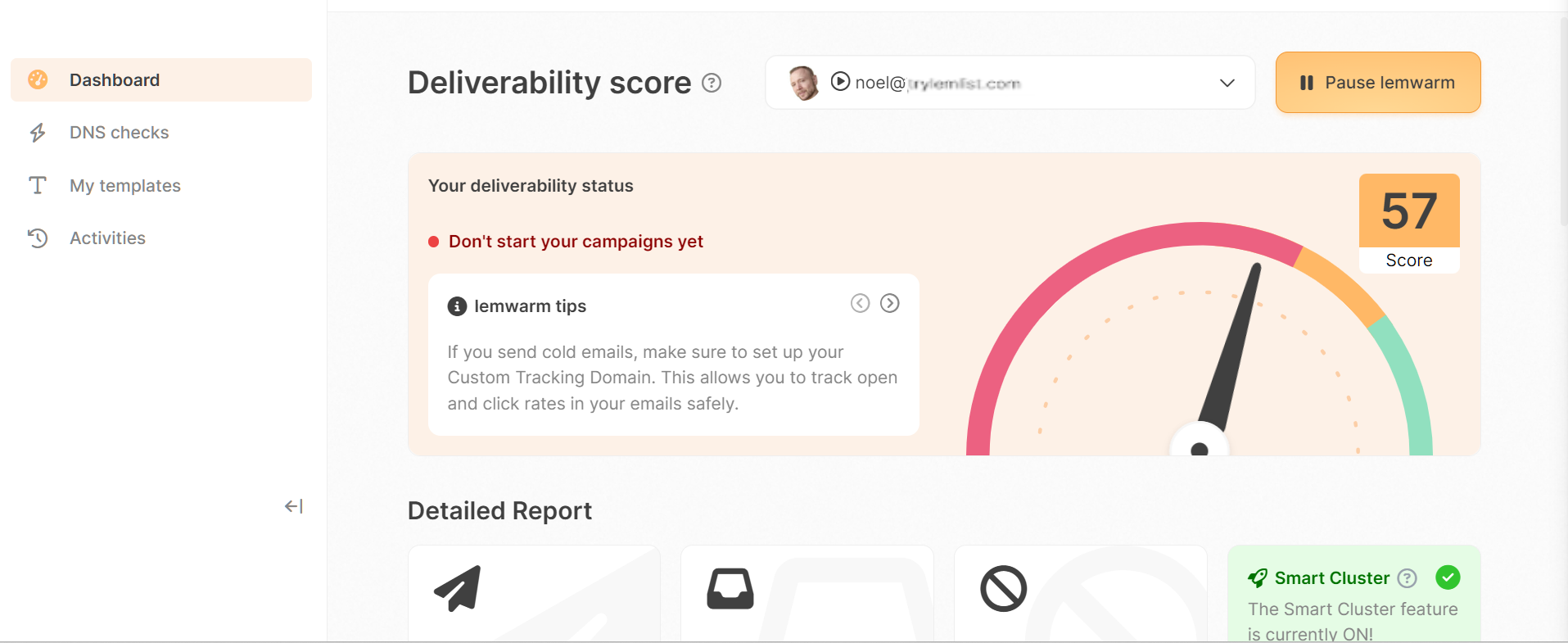What Is SPF? And Why Do You Need It for Email Outreach?
lemwarm
March 11, 2024
|5 min read
SPF is an email authentication method that improves your email deliverability.
The enhanced security that SPF brings builds trust with internet service providers.
This added trust results in more of your emails landing in your audience’s inbox.
In other words, without SPF, you’re not optimizing your email outreach.
Breaking Down SPF
Criminals use email spoofing to pretend to be sending from a domain when they are really not.
This email spoofing can be used to commit cyber crimes like phishing attacks.
SPF aims to prevent all of this by validating the sending server of each email.
Authentication occurs if the sending server is on the list of authorized servers to send from that domain.
If not, the email fails authentication and could get rejected altogether.
The best part is that you decide which servers can send through your domain.
For example, if you’re using an email service provider to send out emails, you’ll want to add their server to your SPF record.
What’s an SPF Record ⁉️

An SPF record is a DNS record that you add to your domain’s DNS settings.
It’s a line of text that looks like this:
v=spf1 include:spf.protection.someemailsender.com -all
Here’s what the record means:
- ➡️ The “v” stands for version. SPF has two versions but the second one is not widely adopted, and SPFv1 remains the most commonly used version.
- ➡️ “include” gives instructions to authorize the subsequent server to send emails from the domain.
- ➡️ “-all” specifies the default action if an email fails authentication. In this case, it means the email server should reject the email if the sending server is not in the SPF record. You can also set it to “~all.” This indicates a soft fail, which means the receiving server may mark the email as suspicious but can still accept it.
Adding multiple servers
You cannot have multiple SPF records, but you can include various sending servers. Here’s an example of an SPF record with two allowed sending servers:
v=spf1 include:spf.protection.somesendingdomain.com include:_spf.google.com -all
Notice how it’s the same SPF record we shared earlier, except with an added server.
You can also add IP addresses to the record by using ip4 and ip6 in the same way as the include tag:
v=spf1 ip4:203.0.113.10 include:spf.protection.someemailsender.com -all
Now, if all of this seems complicated to you, don’t worry. Your email service provider will often give you an SPF record to be added to your domain’s DNS settings.
If there’s already an SPF record, you can just add the include and ip4, and ip6 tags to it, and you should be good to go!
Why You Need SPF for Email Outreach
While implementing SPF isn’t mandatory, doing email outreach without it will result in less security and, thus, lower open rates.
With lower open rates, you will have to work way harder to get the same amount of conversions.
Additionally, if you want to protect your domain from spoofing, then setting up SPF is must too.
In short, SPF, while not mandatory, is essential for email outreach.
SPF-Only Is Not Enough ⚠️
Setting up SPF is a good step toward completing your technical setup.
But just using SPF isn’t enough.
Unlike DKIM, another email security protocol, SPF doesn’t survive forwarding. If a recipient has automatic forwarding set up, then your email appears to be coming from somewhere else.
Custom tracking domain
Your email marketing tool uses a tracking domain to track email interactions, such as opens and clicks.
The problem is that most of their customers use this domain, including the inevitable spammer.
This results in the tracking domain having a questionable reputation.
To prevent this, you need to set up a custom tracking domain that’s only used by you or your organization.
Email warm-up ♨️
If your sending domain or email is new, then you’ll have to warm them up.
Warming up an email means gradually increasing sending volume and frequency while also getting replies to your emails.
While you could probably do it manually, it’s not an efficient way to spend your time.
You’re better off using an email warm-up service like lemwarm.

lemwarm will warm up your email and let you know when you’re ready to start your email outreach.
All of lemwarm’s features have been developed to help keep your emails out of the spam folder.
SPF FAQ
How do you set up an SPF record?
While setting up an SPF record may seem difficult, it’s actually quite easy. We’ve created a dedicated page to help you set up an SPF record.
How exactly does an SPF work?
For a more elaborate explanation on the workings of SPF check out: How Does SPF Work? Email Authentication Method Explained.
What's the difference between SPF and DKIM?
SPF concerns itself with authenticating sending servers, while DKIM checks if an email has been tampered with during transit.